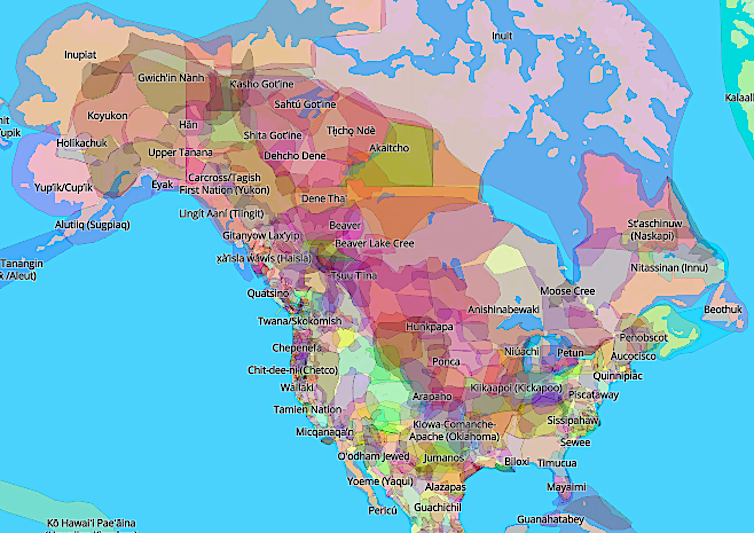On Pausing Acknowledgement of Indigenous Land
October 13, 2021
Three anthropologists explain why land acknowledgments and the related welcoming ritual can help erase history.

A portion of a map that erases the borders colonial powers drew, and shows instead the Indigenous territories, treaties and languages of North America. (Native Land Digital, CC BY-SA)
By Elisa J. Sobo,Michael Lambert and Valerie Lambert
Many events these days begin with land acknowledgments: earnest statements acknowledging that activities are taking place, or institutions, businesses and even homes are built, on land previously owned by Indigenous peoples.
And many organizations now call on employees to incorporate such statements not only at events but in email signatures, videos, syllabuses and so on. Organizations provide resources to facilitate these efforts, including pronunciation guides and video examples.
Some land acknowledgments are carefully constructed in partnership with the dispossessed. The Burke Museum at the University of Washington in Seattle describes this process:
“Tribal elders and leaders are the experts and knowledge-bearers who generously shared their perspectives and guidance with the Burke. Through this consultation, we co-created the Burke’s land acknowledgement.”
More:
https://consortiumnews.com/2021/10/13/on-pausing-acknowledgement-of-indigenous-land/
